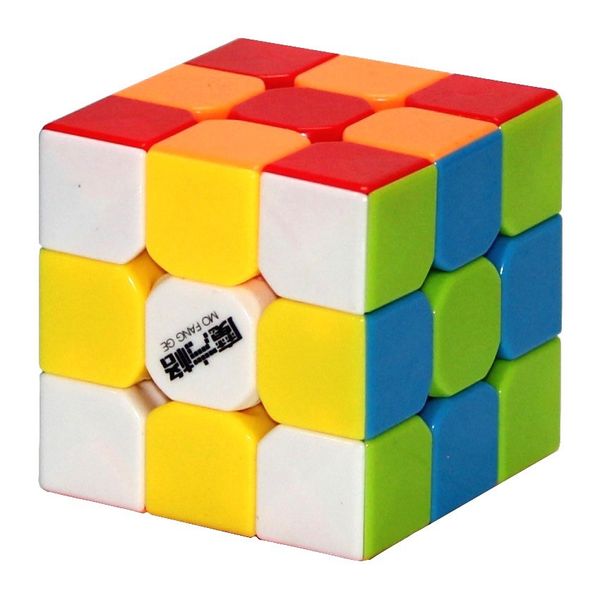
Then again, folks got by just fine in the typewriter days-it may just be a matter of habit.īefore we move on, I should mention one last upside for the mechanical switch camp: longevity. You probably won’t care if you’re a recluse rattling away in your basement, but other people probably will care if you try that around them. Shoving springs inside each key increases cost and weight, and it makes the keyboard loud. I therefore believe the spring-based mechanical design provides a more comfortable typing experience, although I can’t deny the shortcomings. I actually type faster on the Model M, as well, even though my touch-typing technique hasn’t changed.
#Clicky cube review pro#
When I was using a Microsoft Natural Keyboard Pro and typing less each day, I suffered from finger pain and annoying wrist tingling on a regular basis. (Take that however you please.) I’ve been typing 2,000 words a day five days a week for around three years on a 1989 Model M, and my fingers, hands, or wrists never get tired. I don’t have any statistics handy, but I can throw some anecdotal evidence at you. Some users try to alleviate those shortcomings with split ergonomic keyboards, which place your hands in a more natural position, but those don’t really solve the feedback problem-although they can feel comfy enough to type on. That can mean either more fatigue or more typos. So, because dome-switch keyboards don’t let you hear or feel exactly how much force you need to depress a key, you might find yourself pushing too hard or too softly. That dome doesn’t cost much to manufacture, and it generates very little noise when it collapses, but it also has a gummy feel that produces far less tactile feedback. You’ll probably see a grimy rubber dome staring up at you. If you’re in front of a regular desktop keyboard right now, go ahead: pop out one of the keys and look under it.

Patent and Trademark Office.īy contrast, most consumer keyboards out there are based on the dome-switch design, where a rubber membrane with “bubbles” replicates the feel of springs. If you ever used one of the old Apple Extended II keyboards in the 1990s, the Das Keyboard may feel familiar-both units have similar enclosed key switches. According to the diagrams I collected below, the Das Keyboard’s keys should depress when subject to around 56 g of force after 1.2 mm of travel, while the Model M will need approximately 70 g and a 2.3 mm displacement. There’s still a metallic (stainless steel) spring inside each key, and keys still click, but the Cherry key switch has a shorter travel time and requires slightly less pressure.

The Das Keyboard feels similar, although it uses a different mechanical switch design engineered by Cherry. patent 4118611, “The sudden snap action provides a tactile feedback to a human operator due to the sudden decrease in force as will be described more specifically later, and also produces an audible feedback since the sudden pivoting of the rocker member 4 produces a clicking noise.” When depressed, that spring buckles and activates the key switch, which in turn produces the trademark clicking sound-so you really feel and hear the successful key press. An actual metal spring lies waiting under each key. What makes the Model M “click” is the so-called buckling-spring design. Is it really worth that much, and can it compare with IBM’s cult keyboard? While eBay brims with vintage Model M keyboards priced as low as $30, the Das Keyboard carries a $129 price tag. They both produce loud, mechanical clicks after each key press, and they both have bare layouts with no media keys or other frills.

What does this have to do with Metadot’s Das Keyboard Professional? Simply put, the Das Keyboard and Model M share a similar design philosophy: emphasizing tactile and auditory feedback over other attributes. And if you’ve tried a Model M, you might just nod your head in agreement. “Everything that’s come out since then is garbage,” they might tell you while adjusting their glasses and brushing crumbs from their beards. Those people believe keyboard designs peaked some time in the 1980s, when IBM started offering the 1391401-or Model M-with its computers. As for users with more ample budgets, they’ll usually splurge on devices with rows of media keys, split “ergonomic” layouts, built-in LCD displays, or wireless laptop-style designs.įor a small number of enthusiasts and veteran typists, however, the perfect keyboard isn’t the cheapest or flashiest you can pick up at Best Buy. A basic Logitech keyboard will set you back less than $10 nowadays, and you might never give it much thought. Once expensive, heavy, and loud contraptions, they’ve slowly turned into cheap commodity items.


 0 kommentar(er)
0 kommentar(er)
